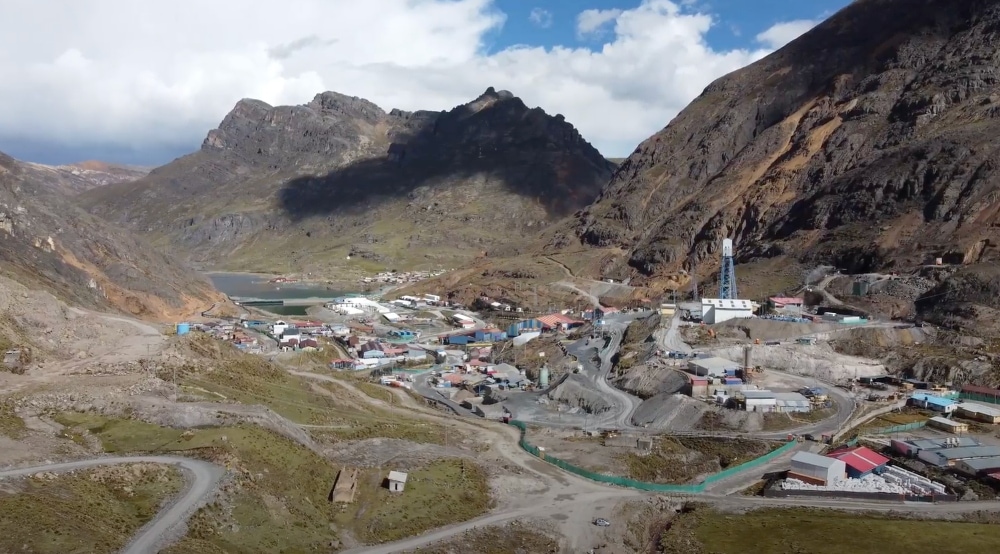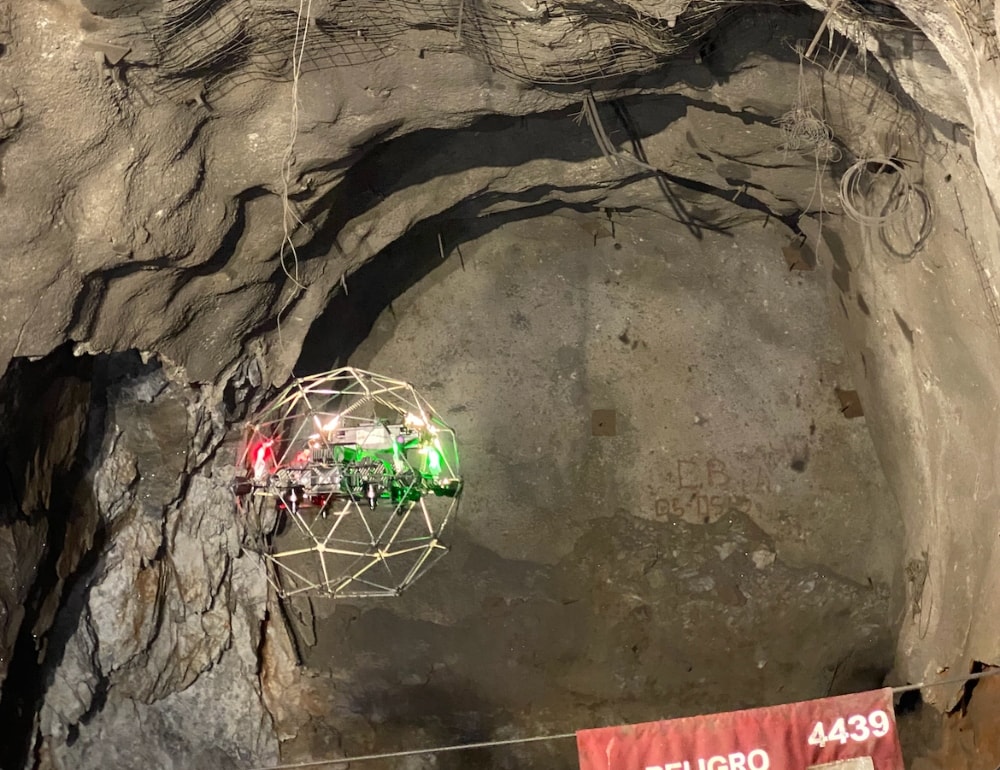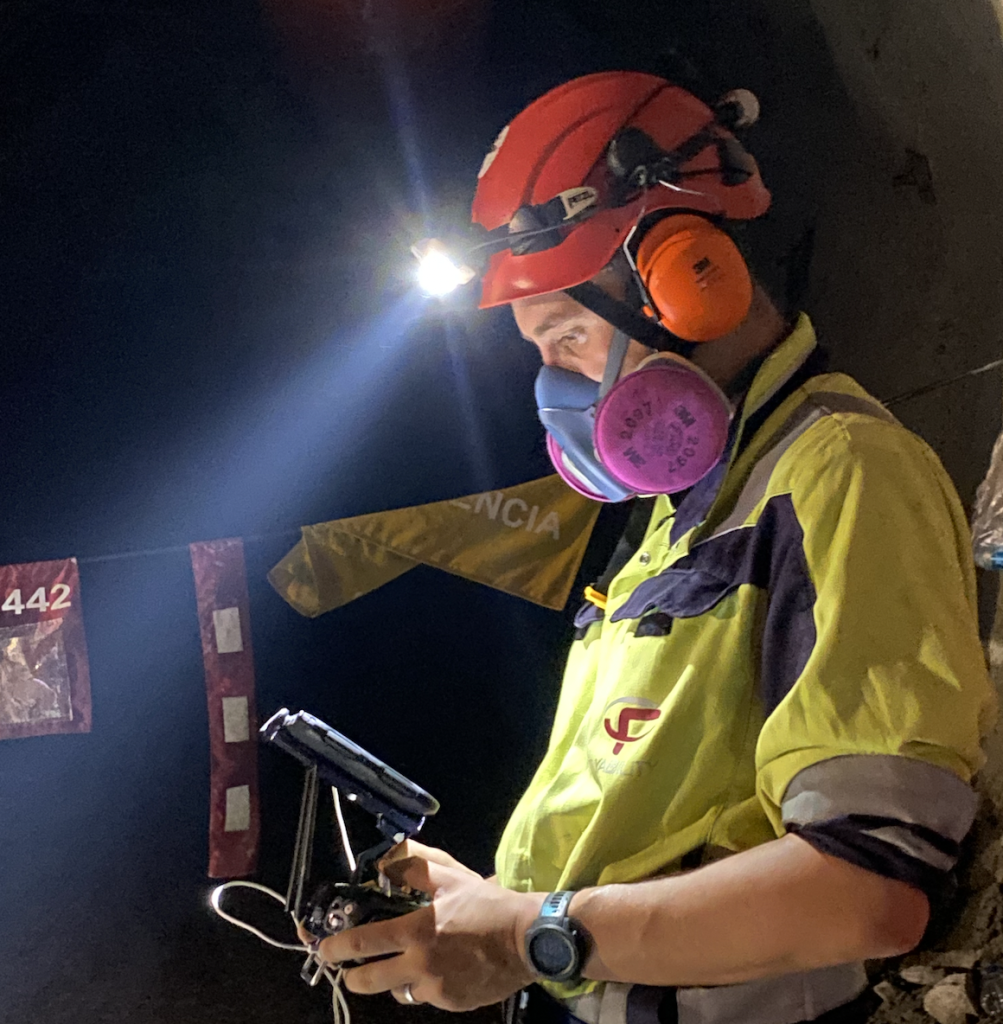Testing the Elios 2 at a Mine Located Almost 3 Miles High in the Andes Mountains
BY Zacc Dukowitz
3 November 2021A Peruvian mining company recently tested Flyability’s Elios 2 at a mine that sits at an altitude of almost three miles high, in the farthest reaches of the Andes Mountains.

Photo credit: Flyability
As in many industries, mining operators have been adopting drones for their work at a rapid rate over the last few years.
The primary use for indoor drones in mining is to collect visual data in unstable areas, such as those that have recently been blasted. This data can help mining personnel to:
- Make safety determinations about whether an area is stable enough to enter in person.
- Make equipment determinations about whether an area is stable enough remotely to enter with expensive mining equipment (when we say expensive we mean millions of dollars—see below for more information).
- Identify remaining ore that may have been missed.
- Create 3D models that can help with all of the above, as well as planning for future work.
By the Way—A Lot of Mining Equipment Is Huge and Really Expensive
As a side note, some of the equipment used in mining is stunningly huge and can cost hundreds of thousands, or even millions of dollars.
The Liebherr R996 B excavator, for instance, is one of the biggest excavators ever made, weighing in at about 745 tons:

Photo credit: Liebherr
Even though Flyability’s Elios 2 is one of the more expensive commercial drones on the market (it’s starting price is about $35,000), that price point is not very significant when compared to the prices commonly spent for some of the large industrial equipment commonly used in mining.
This means that, when you compare risking an indoor drone to learn about the stability in an area to risking one of these more expensive tools, the obvious choice is to use the drone.
Can Drones Fly at Extreme Altitudes?
Despite the growing adoption of drones in mining, they still aren’t being commonly used at extreme altitudes.
For this reason, Volcan Compañía Minera wanted to see if the Elios 2 could actually fly in one of its high altitude mines in order to see whether it might be a reliable tool for the work it does there.
The name of the mine where the company tested the Elios 2 is the Andaychagua. It’s one of the biggest mines the company runs, and sits at a height of 2.86 miles in a Peruvian section of the Andes Mountains, a mountain range that runs through most of the western side of South American.

Exterior of the Andaychagua mine (Photo credit: Flyability)
The main concern when using any kind of robotics at extreme altitudes is that things just work differently when the air becomes thinner.
This is especially true for drones, which have to work harder to fly in the thinner atmosphere found at high altitudes.
For the test, pilots from Flyability flew over 40 different flights throughout the mine, allowing the company to thoroughly vet the Elios 2 in various situations.
The company wanted to test:
- Performance. How well the drone performed at high altitudes.
- Image quality. Whether the quality of visual data it collected was high enough for them to see the conditions inside different parts of the mine.
- 3D models. Whether the drone data could be used to create accurate 3D models of different parts of the mine.

Photo credit: Flyability
Here are the findings from the test:
Performance
The Elios 2 was able to perform despite the strains placed on it by the thinness of the atmosphere.
The biggest impact to performance caused by the high altitude was that the drone’s battery life was significantly reduced, resulting in a loss of battery life by as much as 30%.
This reduction in battery life happened because, given how thin the atmosphere was, the drone had to work much harder to fly, thus putting out more energy over time and depleting the battery more quickly.
Image Quality
The image quality met the needs of the mining personnel, giving them the details they would need to identify extra ore or make safety determinations.

An image taken by the Elios 2 during one of the test flights (Photo credit: Flyability)
3D Models
Four 3D models in total were created of different parts of the mine—two of them are embedded below.
Here’s are a 3D model of a stope (an excavation in a mine in the form of a step or notch):
Here’s another model of a stope:


Watch this video on YouTube
Best Practices for Flying at High Altitudes
Most of us aren’t going to be traveling three miles into the mountains to conduct a commercial drone mission.


Photo credit: Flyability
But just in case you are, here are some best practices from Flyability about how to fly at extreme altitudes:
- Flight time. Expect flight time to be reduced by as much as 30% by the drone’s motors working harder in the low air density found at high altitudes.
- Motor maintenance. Because the extra work can make the drone’s motors overheat more easily, let the motors cool down for around 10 minutes between long flights.
- Long ascensions are hard. The low air density at high altitude makes long ascensions difficult due to overheating. To help with this issue, fly down from the top of a chimney instead of flying up from the bottom, and consider using a fishing line to manually lower the drone to reduce stress on the motors.
- Fishing line. When operating in orepasses and chimneys at high altitudes, it’s a good idea to attach a fishing line to the drone since the motors overheat easily and the potential windraft makes it hard to retain control.
- Temperature considerations. Let the drone adapt to the temperature and humidity by leaving it out of the box for 10-20 minutes before starting to fly. Also, don’t forget to clean the lens of the drone before starting the flight.
- Wind considerations. Since you’ll have to fly in Altitude mode, keep in mind that you will have to fight the wind manually as you pilot the drone.
*Note that some of these are specific to the Elios 2.


